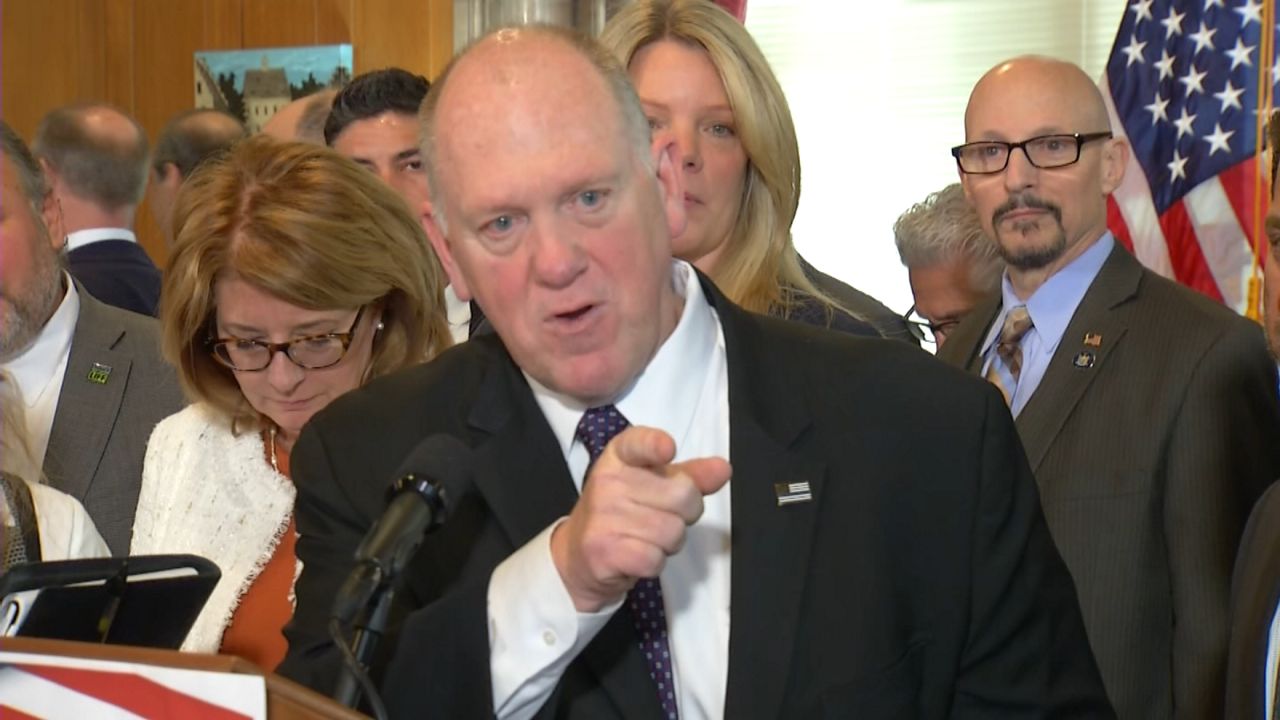The city has spent more than $2 billion on the influx of asylum seekers into the city.
That number is expected to balloon to $12 billion over the next three years and city council members attempted to understand why on Monday.
“When we’re providing more services for an increased population, the costs of services per person should be going down. It is perplexing why the projections continue to reflect this and continue to rise,” said City Council Speaker Adrienne Adams at the start of the oversight hearing.
More than 132,000 asylum seekers have come to the city, with more than 64,000 still in the city’s care. Adams noted that in the last year, daily costs associated with housing and feeding migrants have increased from $363 to $394 as of this month.
Lawmakers tried to get an understanding of this daily cost with little response.
“Out of the current $394 per diem cost, can you break that down for us by dollar? What that breaks down to food, rent, shelter services?,” asked City Councilmember Justin Brannan.
“This is a totally different system that we essentially built from the ground up, we don’t break out the per diem in that way because we’re seeing so many agencies incur costs that benefit each other system,” David Greenberg, deputy director for health and Social Services at the city’s management and budget office, said.
Brannan attempted to get a clear answer, but city officials argued the figures are based on estimates.
“We’re coming up with 394, somehow right, so how are we getting there?” pressed Brannan, the council’s finance chair.
“The per diem that we calculate is comprehensive of all asylum spending to support this population. So that would be services and supplies at the site, housing, rent and initial outfitting to get the site setup for the population, IT and administrative costs, food and medical,” Michael Chimowitz, associate director for policy and operations research at the city’s budget office, said.
City officials said that they have spent the most money on providing services like security and transportation and supplies like baby formula and cribs to migrants at an estimated cost of $1 billion.
The second-highest spending category is housing and rent. But the specific details on which shelters and which agencies are spending the most were not provided.
Meanwhile, lawmakers also attempted to understand why the city is spending significantly more money on the large-scale tent structures versus the traditional shelter sites.
“OMB indicated that per diem cost for asylum seekers in HERRCs was $400 while the cost for those in DHS shelter system was $254,” added Brannan.
City officials said at the outset of the crisis, they initially were using emergency contracts but have since started transitioning to the traditional contract method with the goal of driving down costs.
“Going forward, that’s a cornerstone of our strategy to reduce costs by bringing in as much competition as possible through the vehicle of the RFP. So, we’ll soon see some of the effects of that,” Dr. Ted Long from New York City Health & Hospitals, said.
Long added that the city has already put out four requests for proposals as of this week.








_Dnt_NYIC_Immigration_Clean)
_PKG_Churches_Sheltering_Migrants_CLEAN_132766675_0)